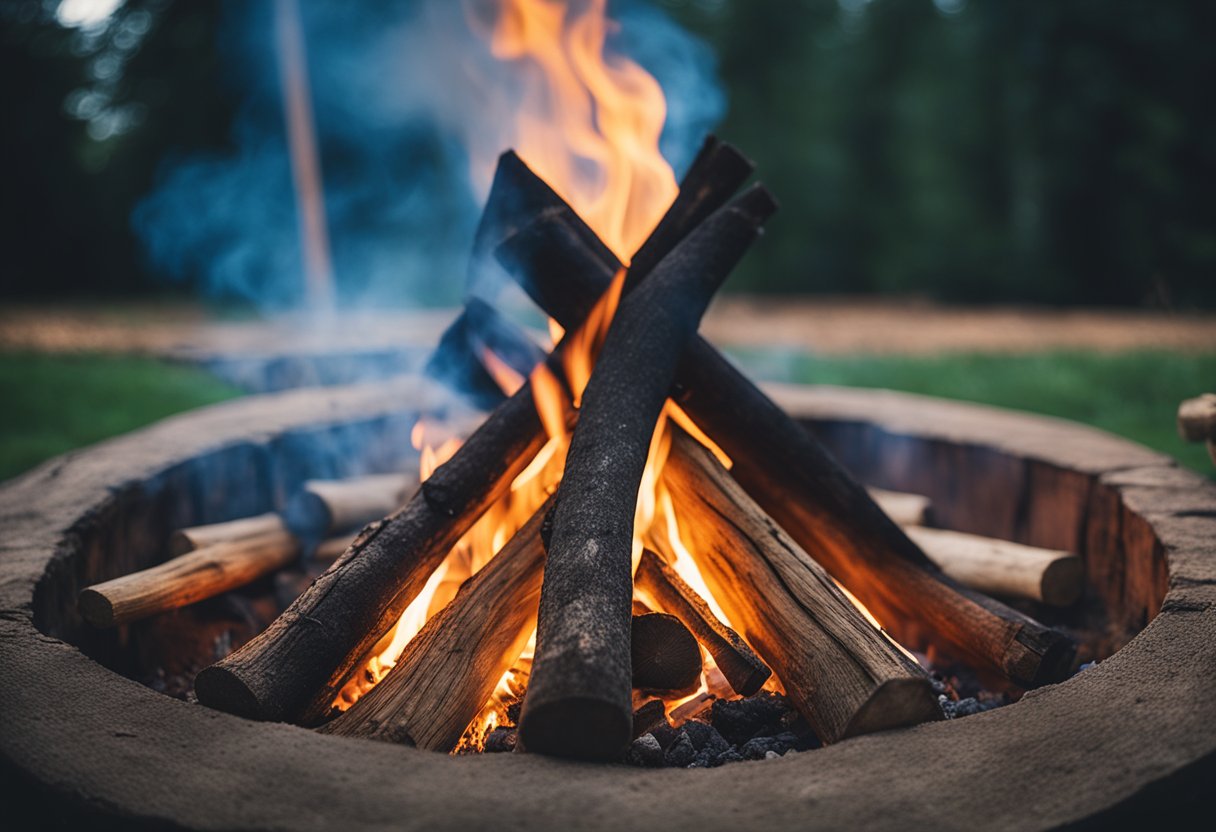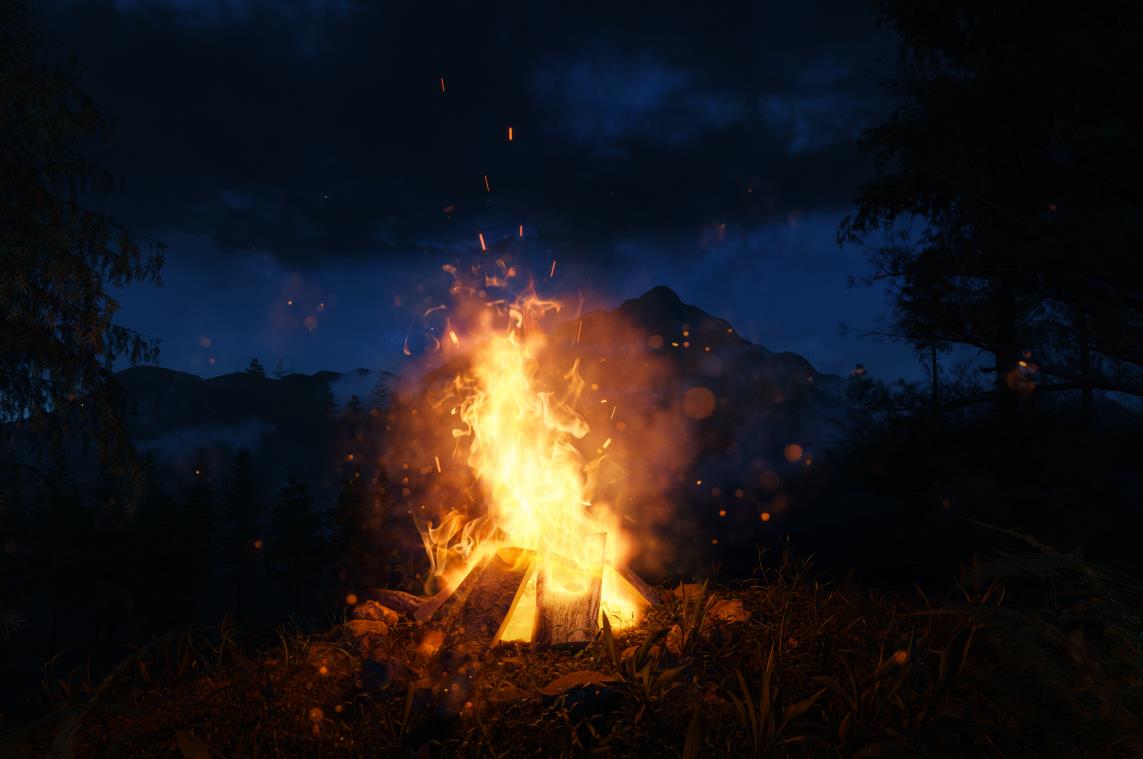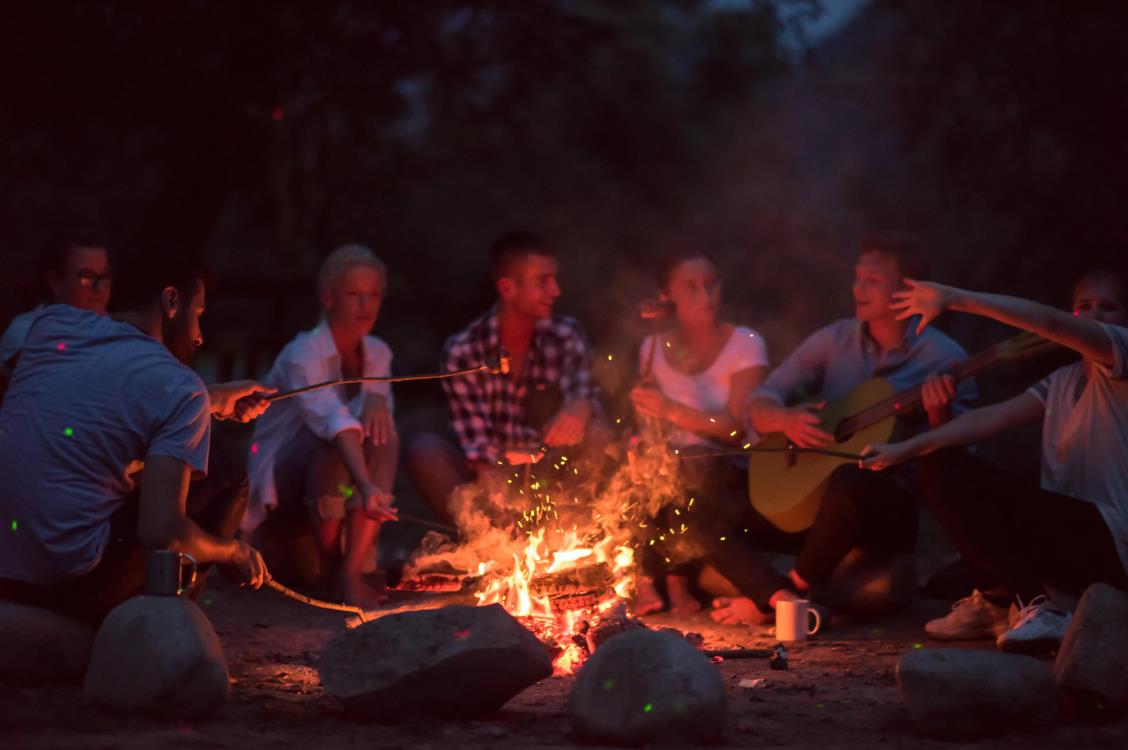Planning a camping trip can be both exciting and taxing, especially when it comes to deciding the perfect meals and snacks. The great outdoors calls for food that is not only delicious and satisfying, but also easy to prepare and store. Creating a complete list of camping food essentials will ensure that your next adventure is enjoyable and hassle-free.
When you create a food list for camping, keep in mind that maintaining your energy levels high while embracing the wilderness is crucial. So your camping food checklist needs to include items that are both nutritious and adaptable to all kinds of weather conditions. Combining simple ingredients with a touch of creativity can make all the difference, turning basic meals into memorable dishes even while away from your home kitchen. As you read on, you’ll find a comprehensive assortment of options to fill the bellies of your happy campers.
Table of contents
For breakfast and a quick meal
When choosing your breakfasts for camping, it’s essential to pick meals that provide enough energy and nutrients to keep you fueled throughout the day. The way we select the complete food list consists of four key standards:
- Nutrition: The food must be packed with nutrition to combat the physical demands of camping and outdoor activities. This includes a balanced mix of macronutrients (carbohydrates, proteins, and fats) as well as essential vitamins and minerals to sustain energy levels, support muscle recovery, and maintain overall health during your camping trip.
- Convenience: The food is better to be prepared easily. Choose foods that require minimal preparation and cooking time, such as pre-packaged snacks, canned goods, or freeze-dried meals. Convenience is crucial when you’re out in the wilderness, as it allows you to spend more time enjoying activities and less time cooking or cleaning up.
- Tasty: The food should be enjoyable to eat, even in the outdoor setting. While taste can be subjective, aim for a variety of flavors and textures to keep meals interesting and satisfying. Incorporate seasonings, sauces, and spices to enhance the taste of your camp meals. Remember that a good meal can boost morale and contribute to a positive camping experience.
- Easy to pack: Choose foods that are compact, lightweight, and easy to transport. Opt for items that come in resealable or durable packaging to prevent spills and maintain freshness. Consider the available storage space in your camping gear and select foods that can be stacked or fit neatly into your backpack or cooler.
Oatmeal

When it comes to a nourishing and fuss-free breakfast at the campsite, oatmeal is an unbeatable choice. It’s not only incredibly simple to prepare but also provides the energy you need to kick-start your day of outdoor adventures.
Preparing Oatmeal at the Campsite:
- Traditional method: Boil water in a camping pot, add oatmeal, and simmer while stirring until it reaches your desired consistency. Add toppings as desired.
- Instant oatmeal: Many brands offer instant oatmeal packets. Just add hot water to the packet, stir, and enjoy.
- Overnight oats: For a no-cook option, prepare overnight oats in advance by mixing oats, your choice of milk, sweetener, and toppings in a container. Leave it in a cooler overnight, and it’ll be ready to eat in the morning.
Granola
Granola is another camper’s delight that’s both convenient and nutritious. It’s a versatile food item that can serve as a snack, breakfast, or even a topping for other dishes. Several ways to enjoy granola includes:
- As a snack: Keep a bag of granola handy for quick snacking while on the go. It’s an excellent source of energy during hikes or between meals.
- Breakfast bowl: Mix granola with dried fruits and your choice of milk (or powdered milk for added convenience) for a hearty breakfast. Add a drizzle of honey for extra flavor.
- Topping: Use granola as a topping for yogurt, oatmeal, or even desserts like campfire-roasted fruit. It adds a delightful crunch and texture to your dishes.
- Trail mix: Combine granola with nuts, seeds, and chocolate chips to create a homemade trail mix that’s perfect for taking on your outdoor adventures.
Energy bars
Energy bars are the ultimate on-the-go snack for campers who need a quick burst of energy or a convenient pick-me-up between meals. These compact and nutrient-packed bars are an essential addition to your camping food list.
Peanut butter sandwiches
Peanut butter sandwiches are a camp cooking staple for several compelling reasons. Firstly, they are incredibly convenient, requiring minimal preparation and no cooking equipment or heat source. Simply spread peanut butter on bread, add some jam if desired, and you have a quick and satisfying meal ready to go. This simplicity makes them perfect for campers on the move or in situations where cooking facilities are limited.
Scrambled eggs
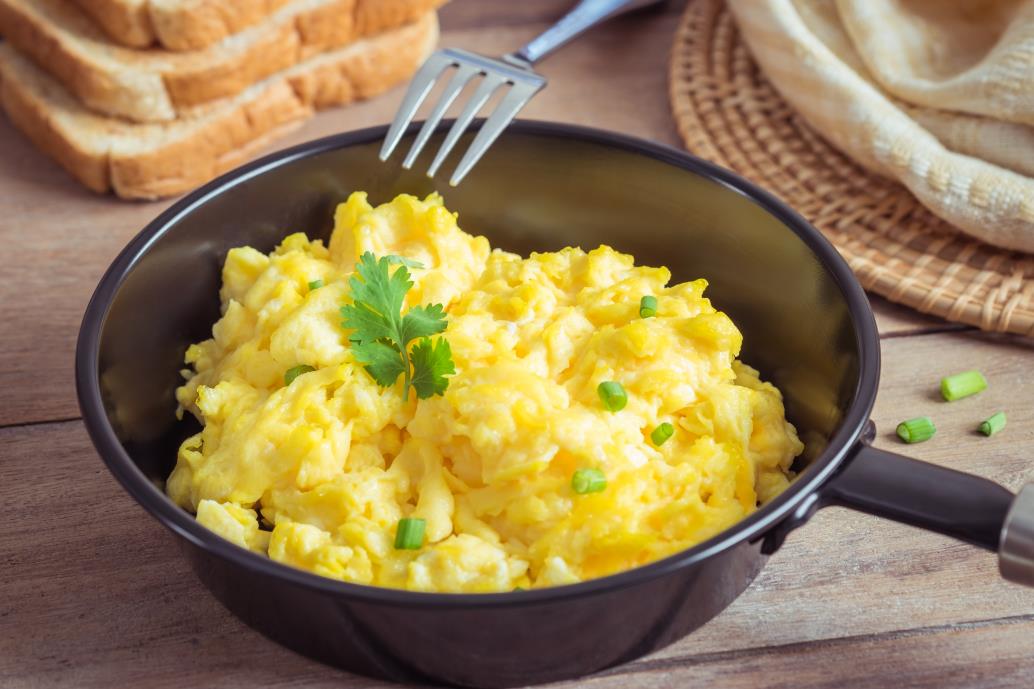
Scrambled eggs are a classic and comforting choice for campers seeking a hot and protein-packed breakfast. This beloved camping meal is easy to prepare and versatile in its variations, making it a staple on many outdoor adventure menus. Scrambled eggs can be prepared in advance and heated up in the camp, or cooked over campfire for a quick minute. To make scrambled eggs, you need the following ingredients:
- Eggs
- Oil or butter
- Salt and pepper
- Optional ingredients: Customize your scrambled eggs with any of the following, based on your preferences:
- Diced vegetables (e.g., bell peppers, onions, mushrooms)
- Shredded cheese (e.g., cheddar, mozzarella)
- Cooked bacon, ham, or sausage bits
- Herbs (e.g., parsley, chives) for added flavor
For main course
When planning your main course for camping, consider a mixture of ready-to-eat options and ingredients to cook at the campsite. Variety is important to keep meals interesting, and having different types of food will ensure you have something to enjoy no matter the cooking situation.
Ready-to-eat
Ready-to-eat options are convenient and can save you time and effort. These might include:
- Canned goods: beans, vegetables, fruit, soup, and chili
- Pouches of pre-cooked rice or pasta
- Pre-packaged macaroni and cheese
- Jerky and dried meats
- Bread
When selecting canned goods, opt for easy-open cans or make sure to pack a can opener. Also, take note of the expiration dates and storage requirements for these products.
Cooking ingredients
On the other hand, ingredients to cook on-site will give you the chance to be more creative with your meals. You can prepare delicious main courses such as:
- Boxed mac & cheese
- Pasta dishes like spaghetti, or macaroni with cheese sauce or tomato sauce
- Rice dishes like stir-fry, curries, or jambalaya
- Foil packet meals with your choice of meat, potatoes, and vegetables
Snack and dessert options
When it comes to camping, having variety in your snacks and desserts will drastically improve your camping experience. Snacks provide quick energy, while desserts help satisfy your taste buds after a meal. Here are some snack and dessert options for your next camping trip.
Trail mix
This classic camping snack is perfect for hikes and late-night munchies. Customize your trail mix by combining different types of nuts, such as almonds, cashews, and peanuts. Add some sweetness with chocolate chips or M&Ms, and toss in dried fruit like raisins or dried cranberries for a touch of tartness. It’s lightweight, doesn’t require refrigeration, and provides an instant boost, making it an essential addition to your camping snack arsenal.
Fruit
Apples and grapes make for excellent, portable snacks while camping. Their natural sweetness and crunchiness provide a refreshing break from packaged, processed foods. Be sure to wash and dry them thoroughly before packing to avoid spoilage. In case you prefer something with a longer shelf life, you can opt for dried fruit options such as apricots, bananas, and mangoes. They are lightweight, easy to carry, and provide an ideal energy boost when needed.
Nuts

For a high-protein, nutritious snack, nuts like almonds, cashews, and walnuts are a perfect choice. Packed with healthy fats, they will help keep you full and satisfied throughout the day.
Chocolate
A camping treat that you can never go wrong with is chocolate. Choose a variety that doesn’t melt easily, like chocolate bars or individually wrapped chocolate candies.
S’mores
No camping trip is complete without s’mores. Remember to pack marshmallows, graham crackers, and chocolate bars for the iconic campfire experience. Roast marshmallows to your desired level of doneness, and create a delicious dessert that everyone will enjoy.
Drinks
Tea
For tea lovers, packing tea bags and a camp stove or a portable kettle to heat water makes for a comforting and soothing drink. You can bring flavored or herbal teas to suit your preferences. Don’t forget a thermos to keep your tea warm during colder evenings.
Coffee
If you need a caffeine boost in the morning, consider packing instant coffee or single-serve coffee packets. Some campers might prefer a lightweight camping French press, drip coffee maker, or an espresso maker for an authentic outdoor coffee experience. Different types of coffee to brew.
Juice
For a burst of natural sugar and energy, pack shelf-stable juice boxes or juice pouches. Not only are they lightweight and portable, but they also offer a variety of fruity flavors. Remember to bring a small cooler with ice packs to keep your juice refreshingly cold.
By including these drink options in your camping food list, you will stay hydrated and energized throughout your adventure. Remember to adjust the quantity and type of drink options according to the needs and preferences of your camping group.
Packing for your trip
When preparing for a camping trip, properly pack your food is crucial to ensuring a great experience. Before heading out, make a list of all the meals you’ll be enjoying while camping, then assemble your cooler and camp kitchen accordingly.
To start, choose a cooler that will maintain the temperature of your perishable food for the duration of your trip. Take note of how long food items will last while on ice, and pack accordingly. Fill the cooler with ice packs, then follow these steps:
- Place the items that don’t need to be on ice first, such as canned goods and jar items, at the bottom of the cooler.
- Next, layer your perishable items, with raw meats and dairy on the bottom, followed by vegetables and fruits.
- On top of your perishable items, add another layer of ice packs to ensure that your food stays chilled.
Remember to pack the right amount of food to last the entire trip and consider bringing extra portions in case of emergency. By organizing your cooler and camp kitchen in advance, you’ll set yourself up for a successful camping trip with fresh and delicious meals.
Food preservation and storage
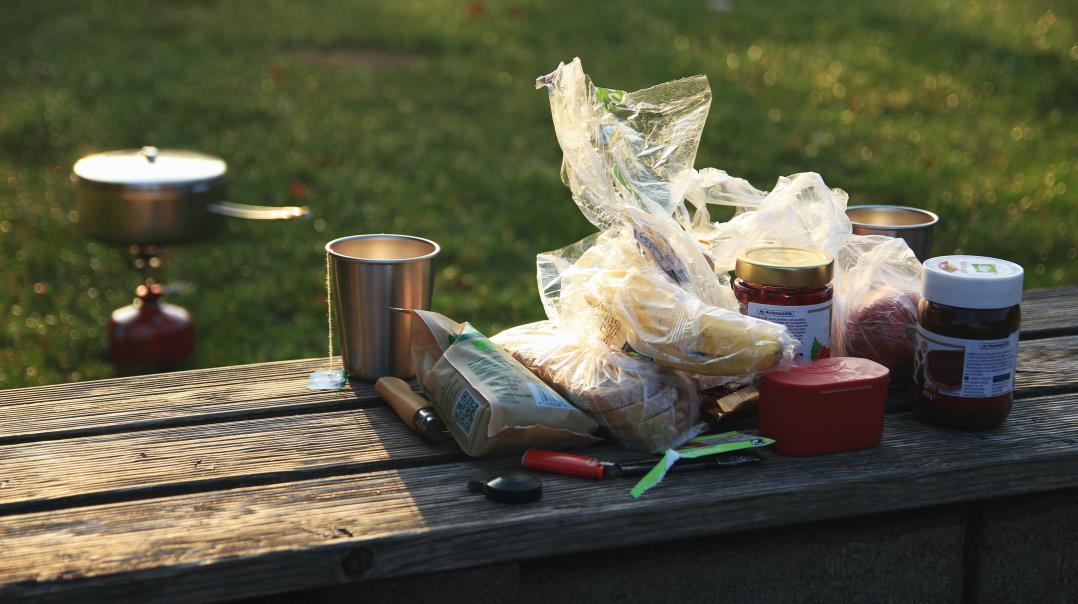
It’s always essential to preserve and store your food properly to prevent spoilage and ensure you have safe, nutritious meals. To do this, you need to consider two main aspects: temperature control and packaging.
Keeping the food cold
To keep perishable items fresh, consider using a cooler. Choosing the right cooler size and materials is crucial for maintaining the desired temperature. When packing your cooler, keep raw meat and poultry separated from other foods to avoid cross-contamination. Don’t forget to pack ice or ice packs to maintain the appropriate temperature. A helpful tip is to freeze some of your food items, like meat and vegetables, so they can act as additional cooling agents and last longer.
Packaging
Go for airtight containers that prevent leakage and protect your food from water, dirt, or insects. Reusable silicone bags, plastic, or metal containers with sealing lids are perfect for this purpose. Vacuum sealing bags can also save space and maximize freshness. When packing, it’s a good idea to divide your food into meal-sized portions, so you’re only opening the necessary amount when it’s time to cook.
Basic camping cooking gear
When you’re planning your camping trip, some essential cooking gear can make all the difference in your outdoor culinary experience. To ensure you’re well-prepared, let’s take a look at some basic camping cooking gear you should bring along.
First and foremost, you’ll need a portable stove. This can be a compact propane or butane stove, or even a small wood-burning stove. A reliable, lightweight, and easy-to-use stove is a must-have for cooking up delicious meals during your camping trip.
Don’t forget about cooking utensils. This includes a spatula, large spoon, and tongs. These utensils will assist you in preparing and serving your meals. Having a good set of camping-specific utensils ensures you have the proper tools for your outdoor cooking needs.
You’ll also need a set of tools to make your camping cooking experience seamless. This includes a reliable camping knife or multitool, a can opener, and a pair of kitchen scissors. These tools will come in handy when opening cans, trimming meat, or cutting through packaging.
Taking the time to gather these basic camping cooking gear items will ensure you’re well-equipped to create memorable meals and enjoy your outdoor adventure to the fullest.
Best Camping Cooking Knives
True cutting power in the palm of your hand
Conclusion
Planning your camping food list doesn’t have to be a challenge. By considering the essentials, such as water, carbohydrates, proteins, fats, and vitamins found in various foods, you can create a delicious and nutritious menu for your outdoor adventure. Make sure you bring along non-perishable items and store them in a safe, cool, and dry environment throughout your trip to ensure freshness.
Remember to adapt your camping food list according to your dietary preferences and restrictions, as well as to the unique cooking amenities of your specific campsite. It may also be useful to bring along extras, like condiments, spices, and cooking oil, to enhance the flavor of your meals. Additionally, don’t forget to pack essential items like utensils, cookware, a cooler, and a portable stove.
By planning ahead and keeping your camping food list versatile and well-rounded, you’ll be able to enjoy tasty and satisfying meals during your adventure. Bon appétit and happy camping!







